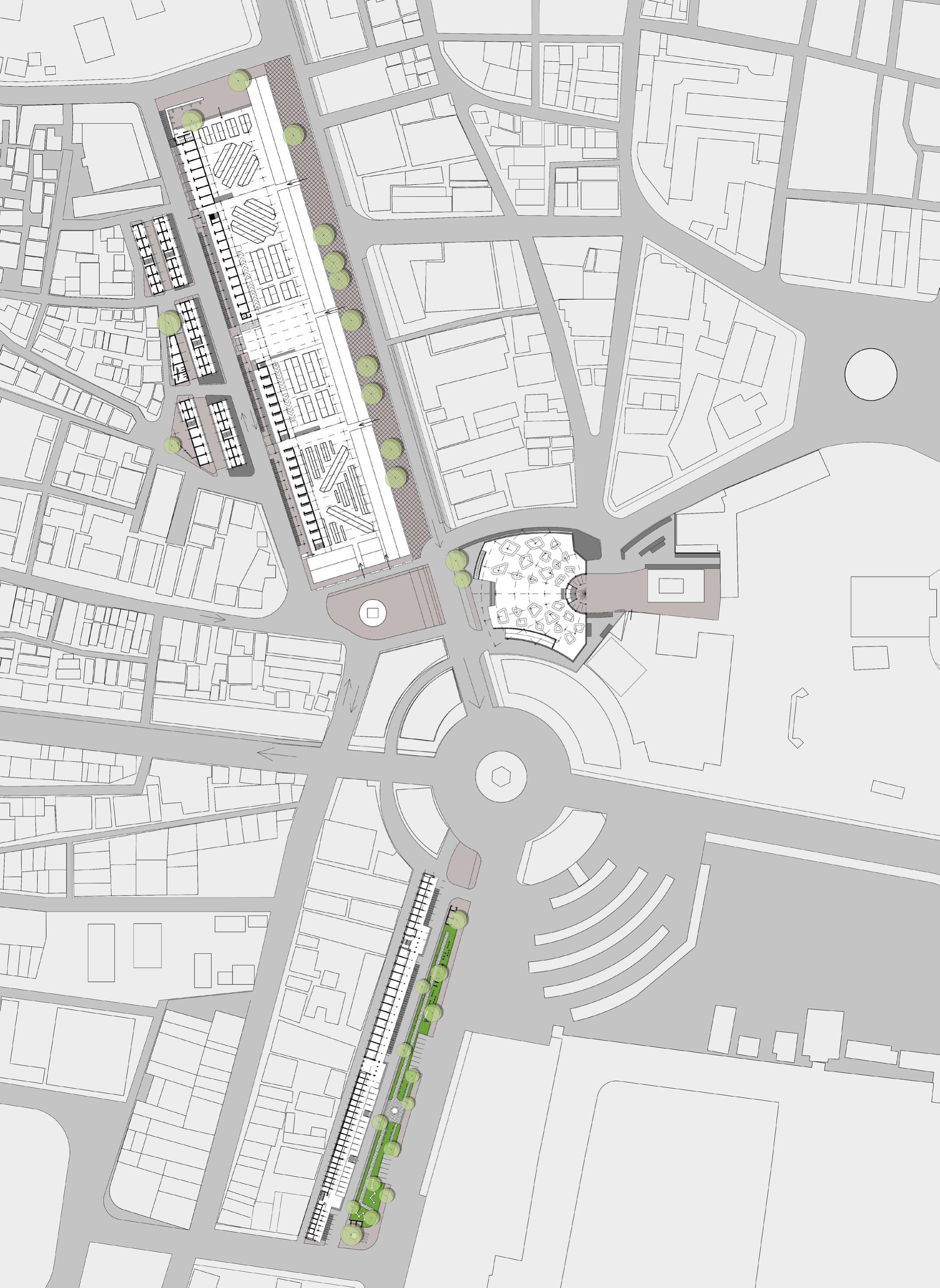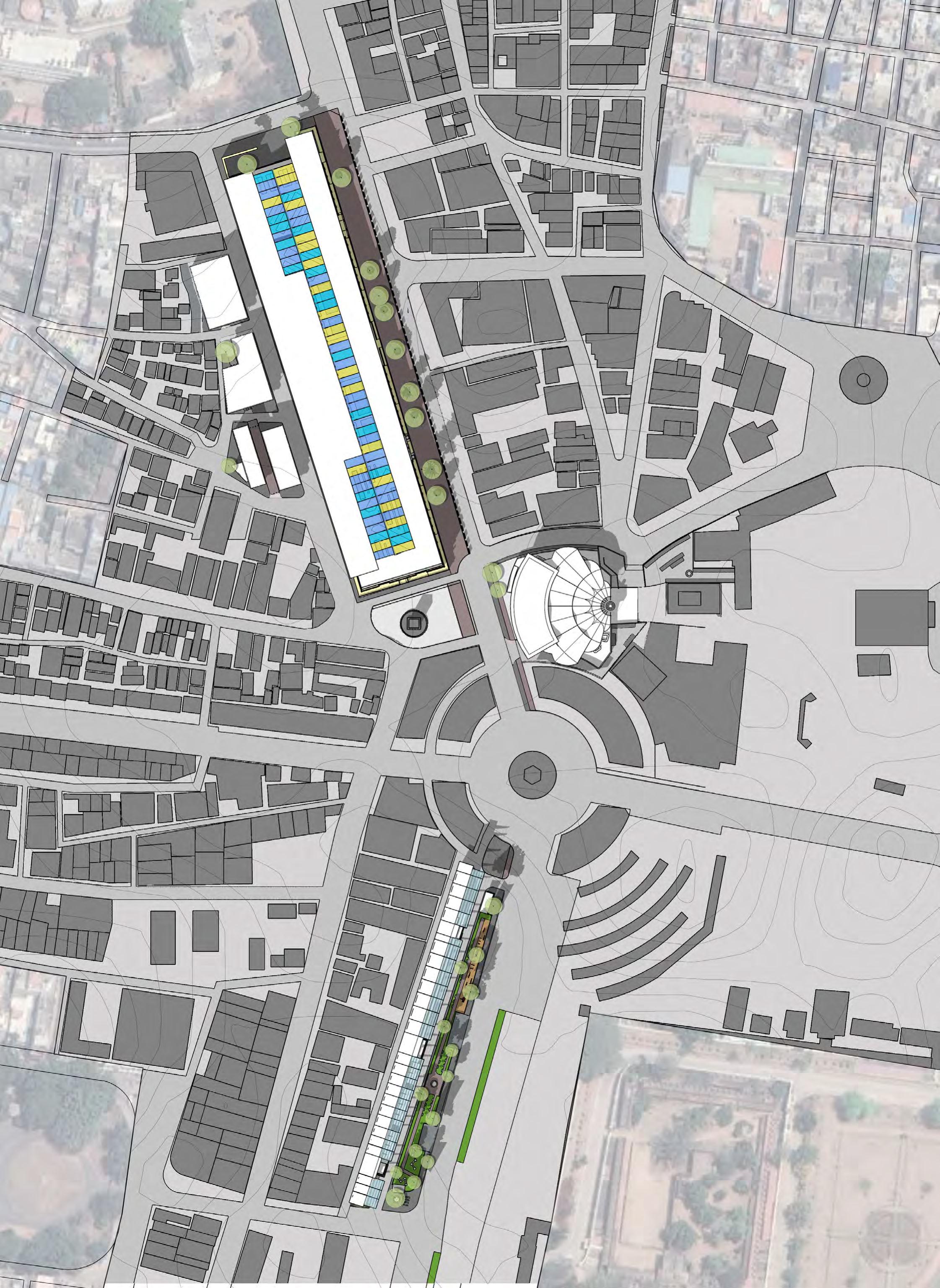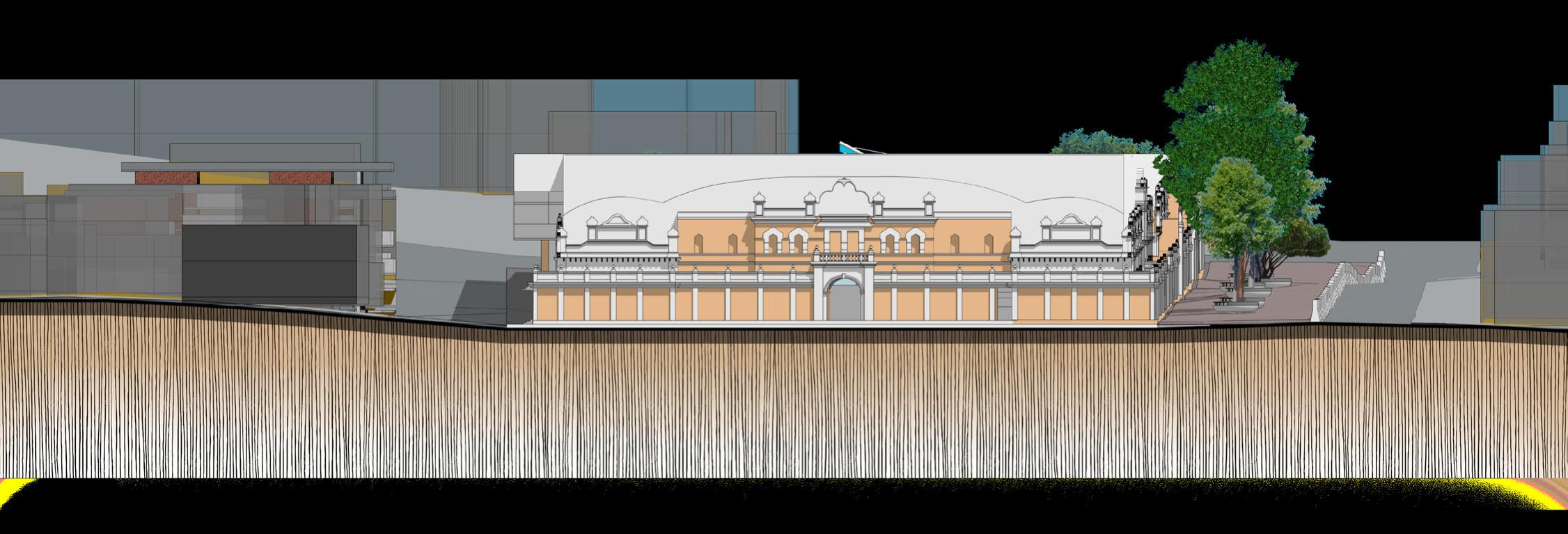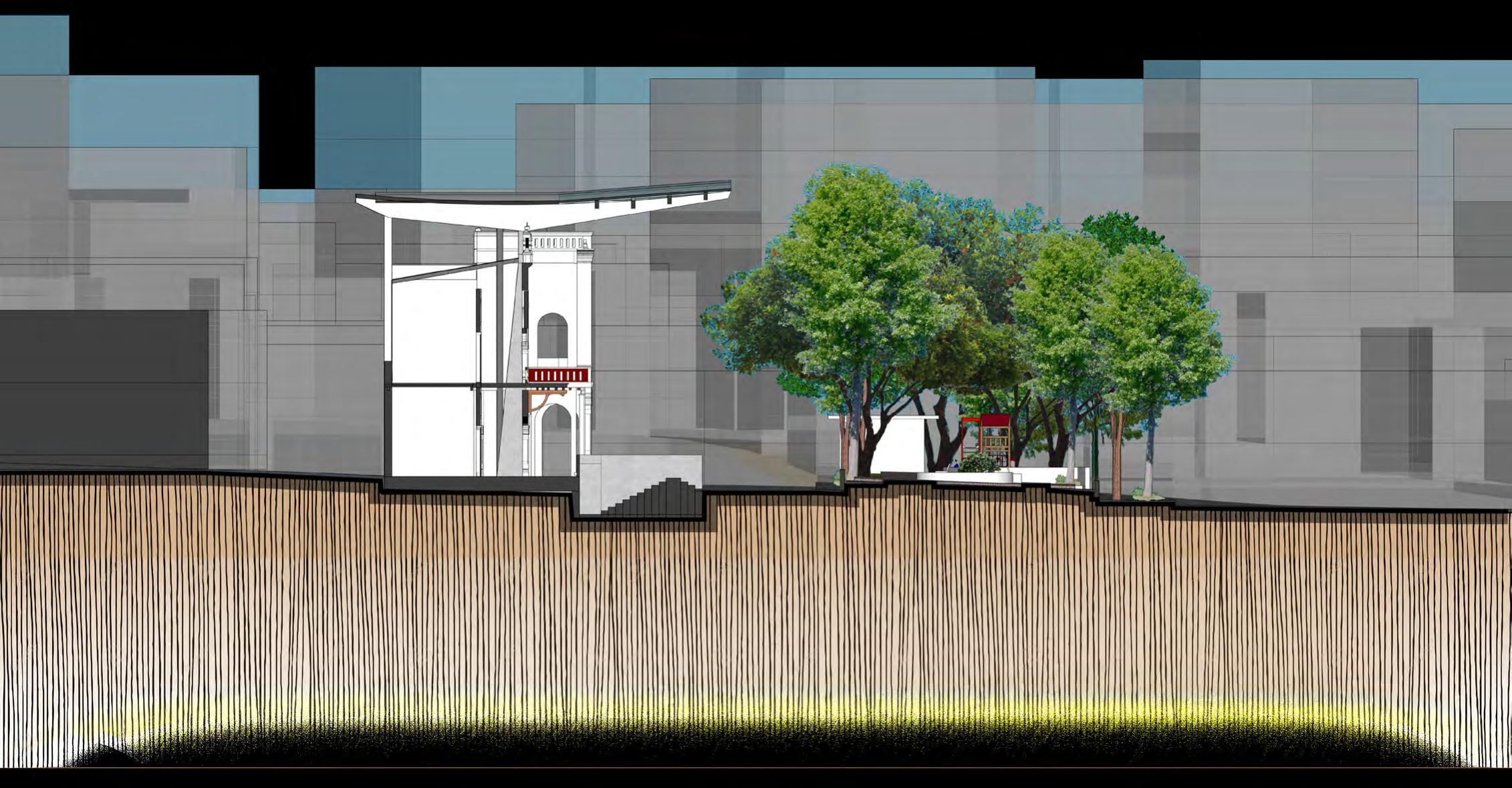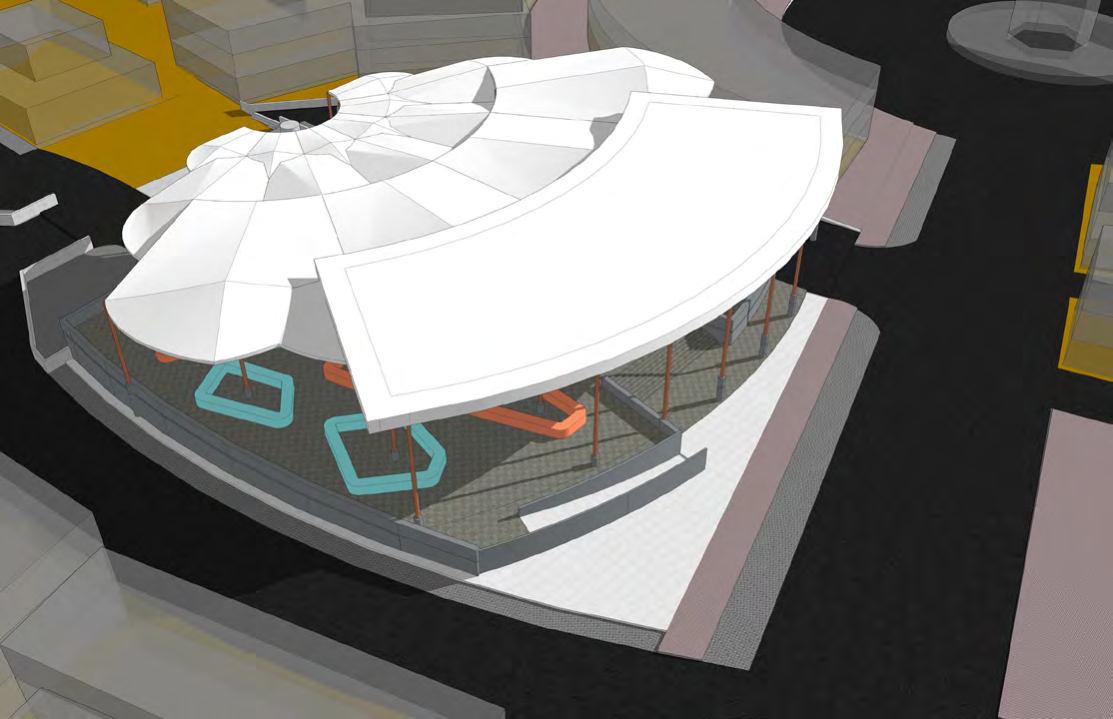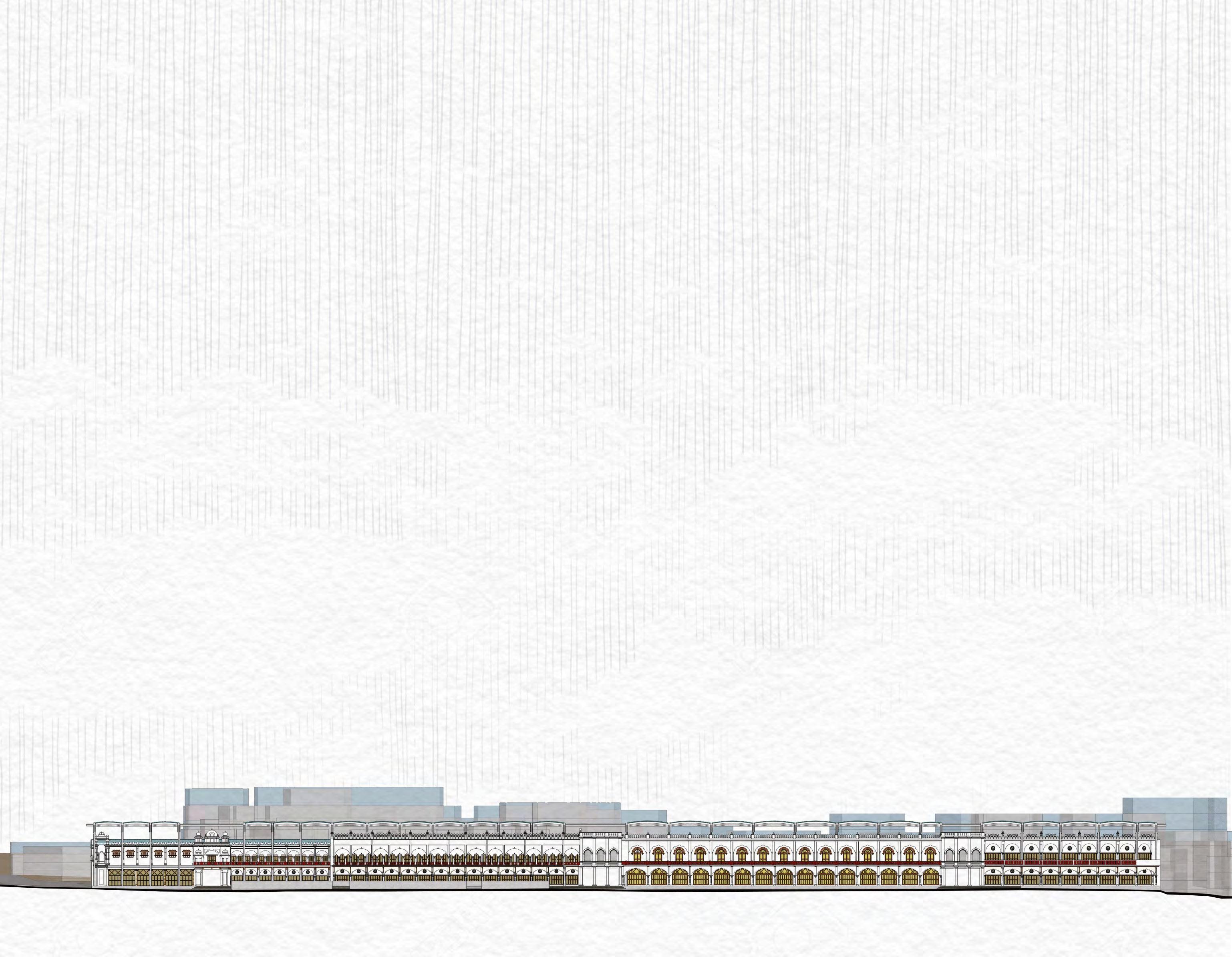
3 minute read
BAZAARS OF MYSORE
Academic Work
KR road, Bangalore
Advertisement
Study Area: 18 acres
Site area: 1200 sqm
Heritage is valuable for humankind the world over. It encapsulates all that the previous generations passed down to the next, everything that was meant to be cherished and preserved with utmost pride and respect. Market one of urban space, which acts as public space for many users, also sustains the neighbourhood various life needs. Many markets offer more than just functional needs shopping and trading. Market space provides behavioural settings for the neighbourhood and allows people of diverse activities.
Traditional markets are places which show the community lifestyle, culture and heritage that’s why it has a strong rootedness to its local people. This thesis articulates the process of transformation as the vehicle for redevelopment of heritage buildings in our contemporary condition. It includes the investigation of events, theories and methods of transformation in the context of Mysore contemporary practice.
TITLE- Revitalization Of Heritage Landmarks of Mysore
Aim of this thesis is to develop and restore Lansdowne buildingandMysoreDevarajamarketarea,byretaining the Heritage and character of an existing market and introducing modern system to withstand present requirements. Developing an heritage public spaces for trading, business and tourism with celebrates and promotes culture, tradition and historic value.
OBJECTIVE-
To understanding market culture and heritage of the Mysore. To restore the heritage buildings and slow down the naturaldecaying of the structure.
To retain active frontage and creating a system to uplift the legibility.
To provide required commercial and recreational facilities in dense CBD area of Mysore.
To introducing modern methods to sustain traditional market.
To redistribute density in CBD by creating organized spaces and designing to reach maximum FAR and efficiency.
SCOPE-
This project shows how urban redevelopment can increase the imageability and efficiency of heritage buildings. It also shows redistribution of density can be achieved by organized zoning and circulation. Considering the project to be in an urban setup and building restoration, it would help in acting as a demonstration model for other projects.
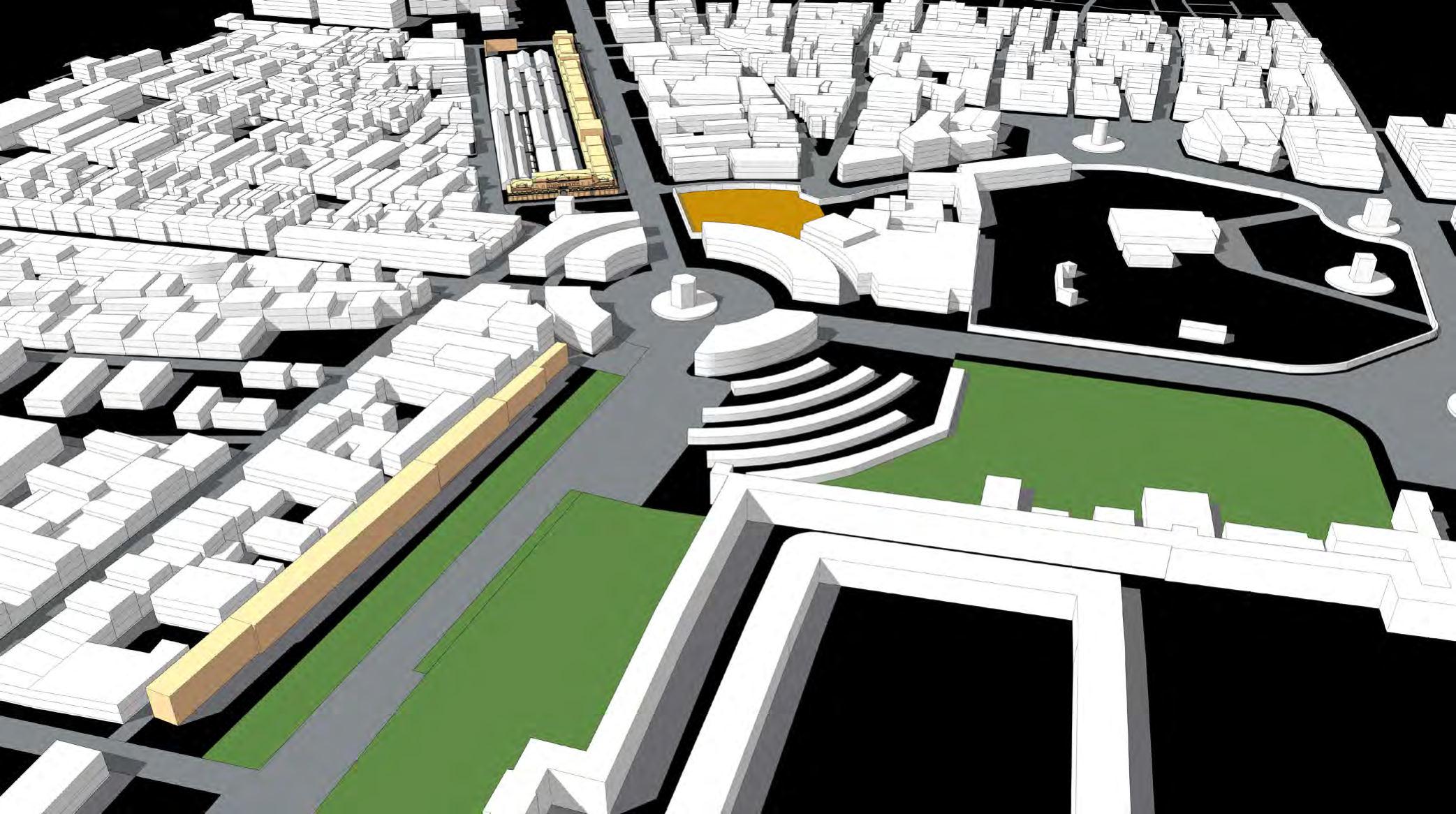

LIMITATION-
Working around heritage structures can come across unexpected complications, which can create a varying design decision during execution. Restoration of historic building projects attracts public which will be subjected to public criticism. The MUDA norms and regulations.
Swot Analysis
Strengthweaknessopportunitiesthreats
• Planned road network.
• Planned zoning of city markets, transportation system in the city center which made easy access to common public.
• Marketspacesisaspacesof tourist attraction with its dynamic activity and culture, along with business and commercial activity.
• Planned parking spaces along the road and dedicated parking spaces in city center.
• Integration of different social classes.
• Enhancement of local economy.
• Regulator(local)pricecommutation and open market.
• Denigrating heritage structures in city center creating a negative spaces.
• Unplanned buildings with lower capacity is not meeting up the potential of plots.
• Un-designated spaces for street hawkers creating a congestion in foot path, parking spaces.
• Number of vesicles parkable is reduces due to street hawkers using parking spaces.
• Road congestion due to high human foot print at certain time in a day.
• Insufficient open spaces.
Issues In Study Area
Potentialofplotsincitycenterisreduced due to lo built up area buildings.
Height density built up area with no open spaces.
Degradation of heritage
• Redevelopment of heritage.
• Designated spaces for street hawkers.
• Re planning of plots to meet maximum efficiency.
• Developing existing open spaces and opening up to public.
• Creatingopenspacewithsupports the present commercial activity around the market.
• Redistributing density and traffic.
• Lackofattentionforfalling heritage buildings can lead to safety issues, abandoning a structure.
• Un used buildings creates a negative space in city center, which leads to density un-even distribution.
• Lack of open space can create over crowding and decreases social activity.
• Due to competition the number of street hawkers may increases over time, un designated spaces for hawkers will increase a traffic issue and pedestrian discomfort.
LansdownebuildingSayyajiRoad
Street hawkers using foot paths, creating congestion for pedestrians
Street hawkers using parking spaces, creating congestion for pedestrians
Unusedcommercialheritagestructures creating inactive zone in city center
High human foot print at concentrated spots of study area. Creating high traffic at once spot where as other spots are deserted at same time period.
Poorly maintained open spaces, close to public access
• Development of existing green space.
• Creating pedestrian friendly spaces to accommodate street hawkers and dense human foot print
• Open space adjacent to Place has no permission for development and access to public.
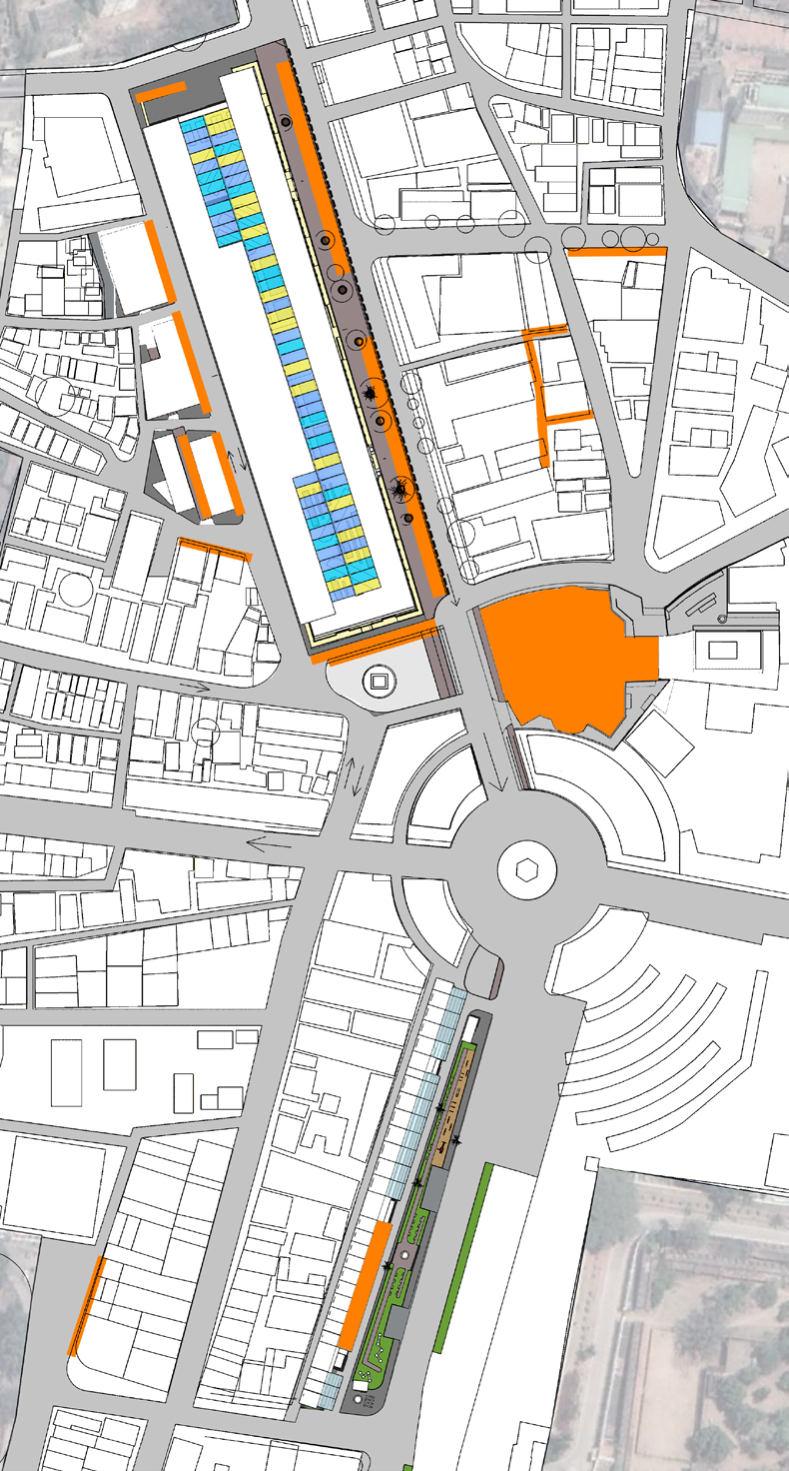
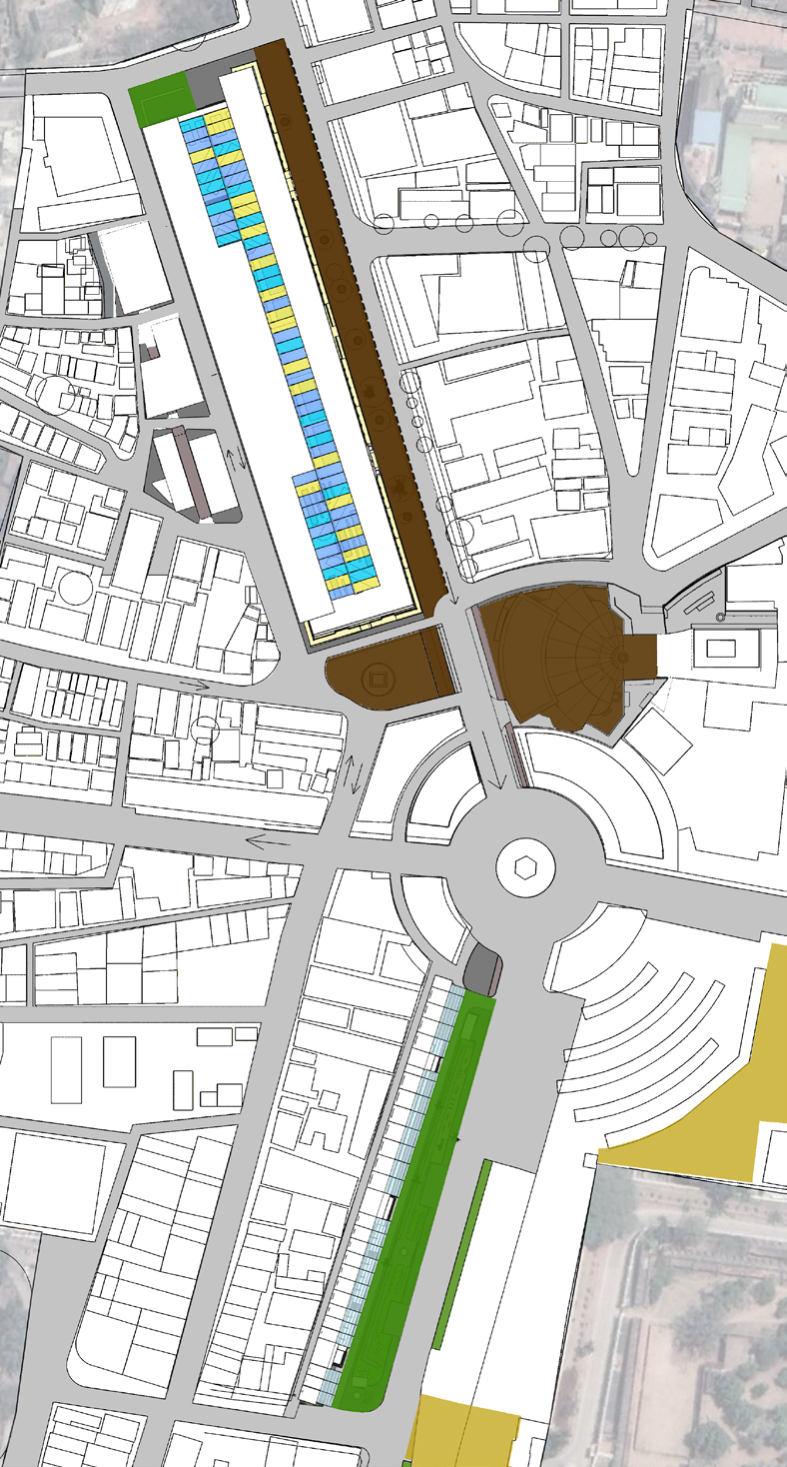
• Traffic and vehicular moment can be reduces by converting road into one way.
• Vehicles are strategically redirected to parallel roads.
• Increasing vehicular moment in inactive roads can bring new activity.
Traffic and vehicular moment can be reduces by converting road into one way.
• Street hawkers all over study area is replace to dedicated spots.
• Each dedicated spaces provided facilities and protection from weather.
• Strategic replacing redistributed the density in city center.
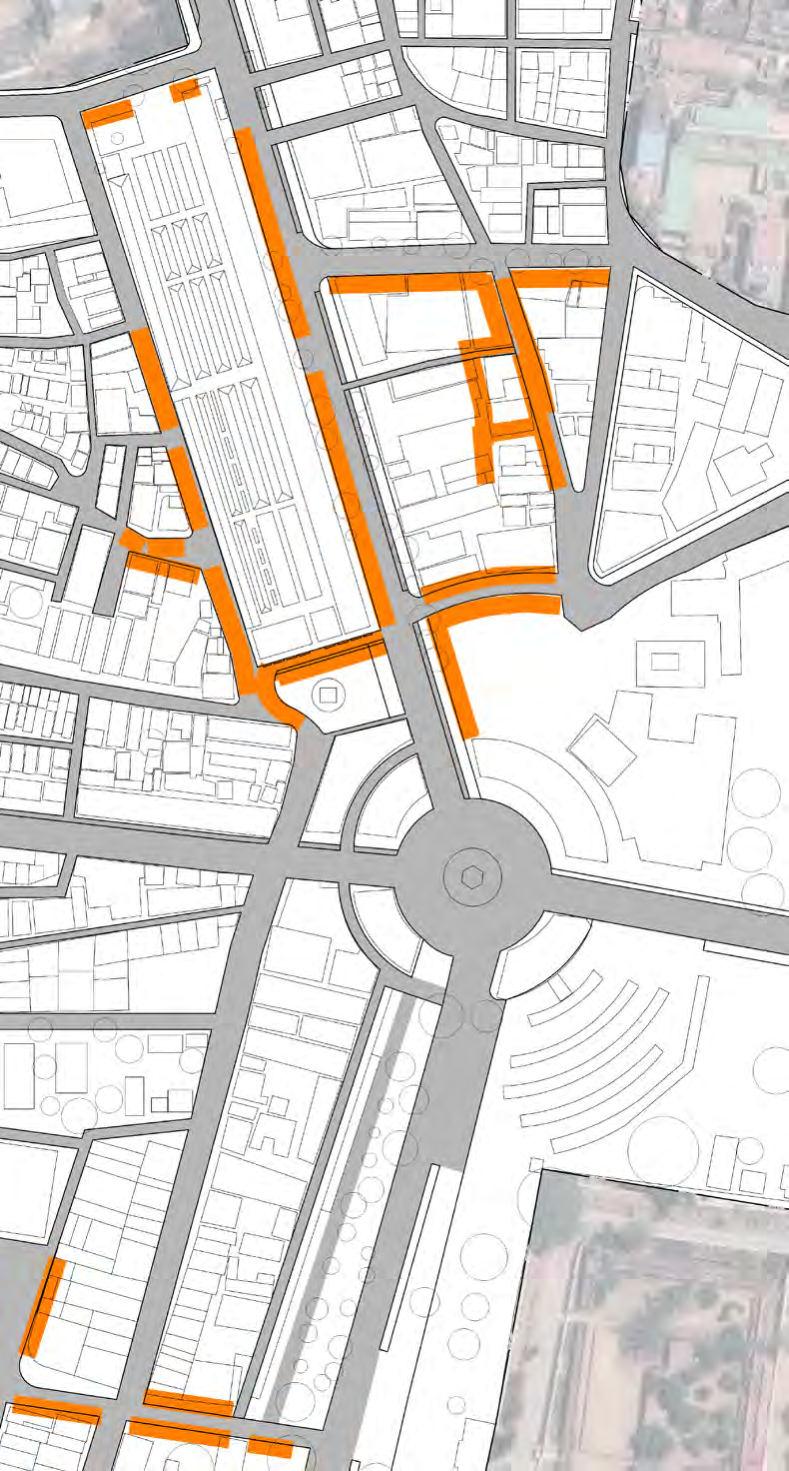
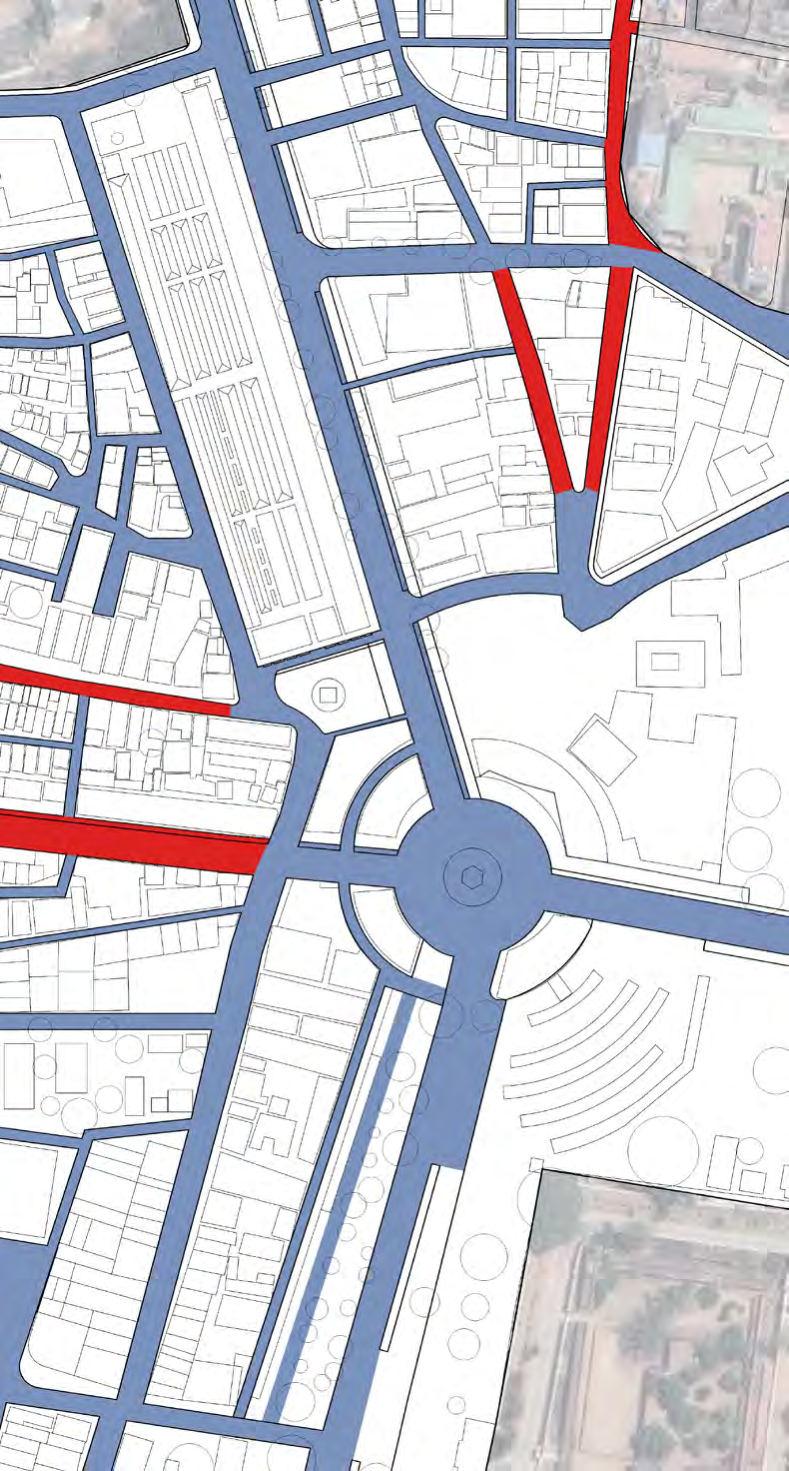
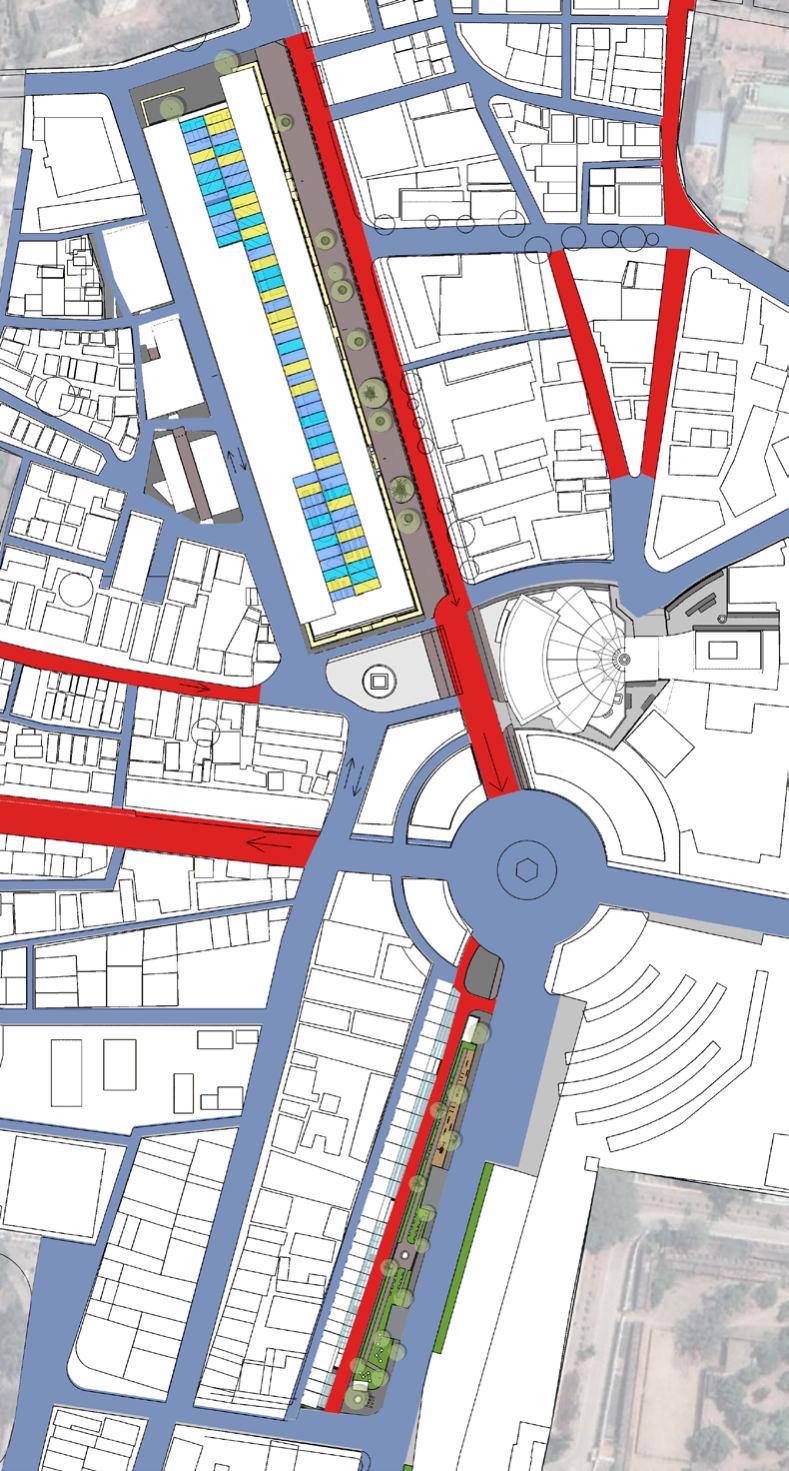
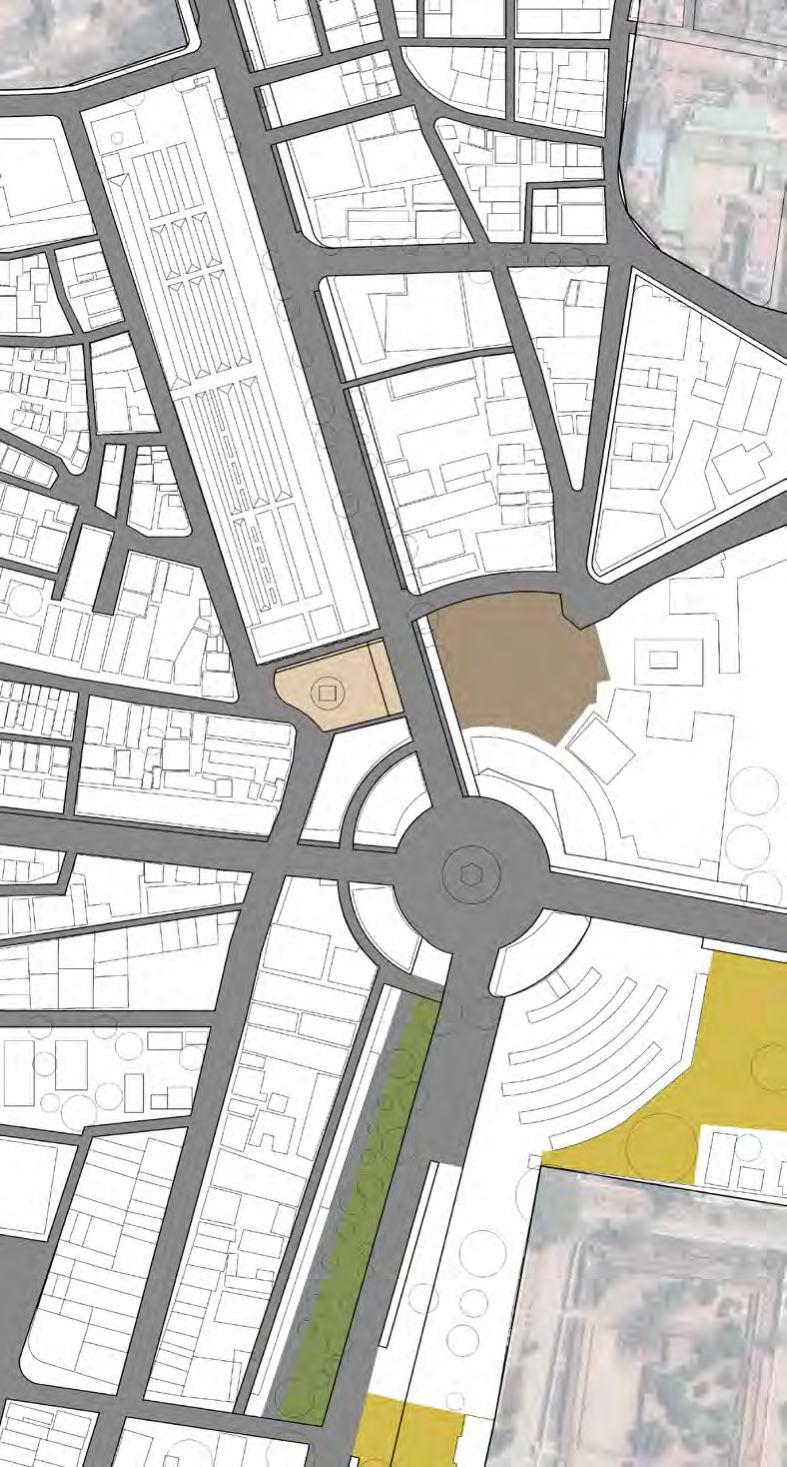
• Aim is to reduce the disturbance to pedestrian and vehicular traffic due to street hawkers.
Aim is to reduce the disturbance to pedestrian and vehicular traffic due to street
